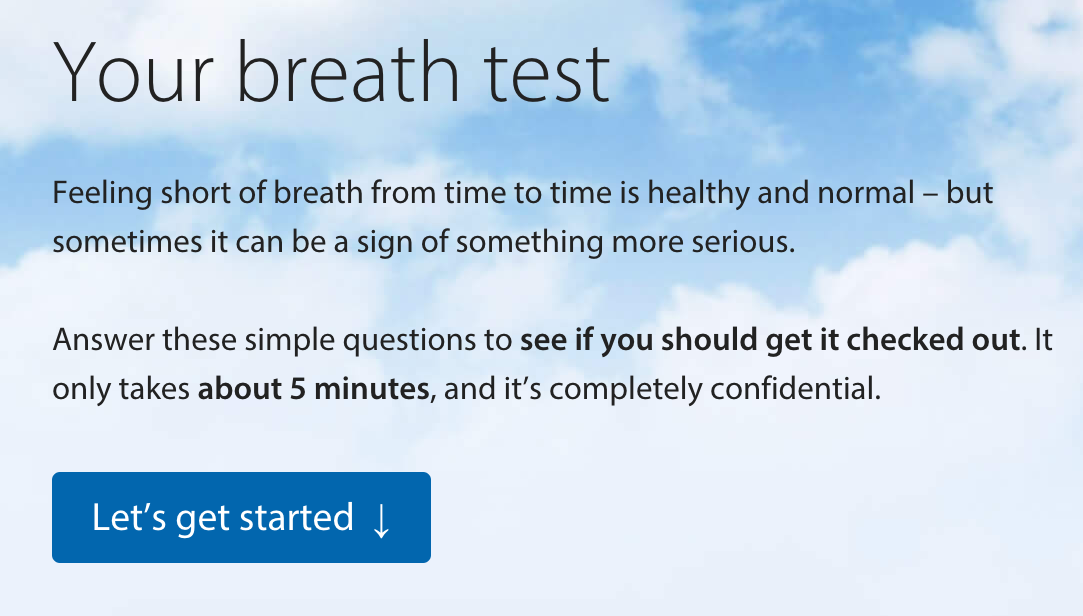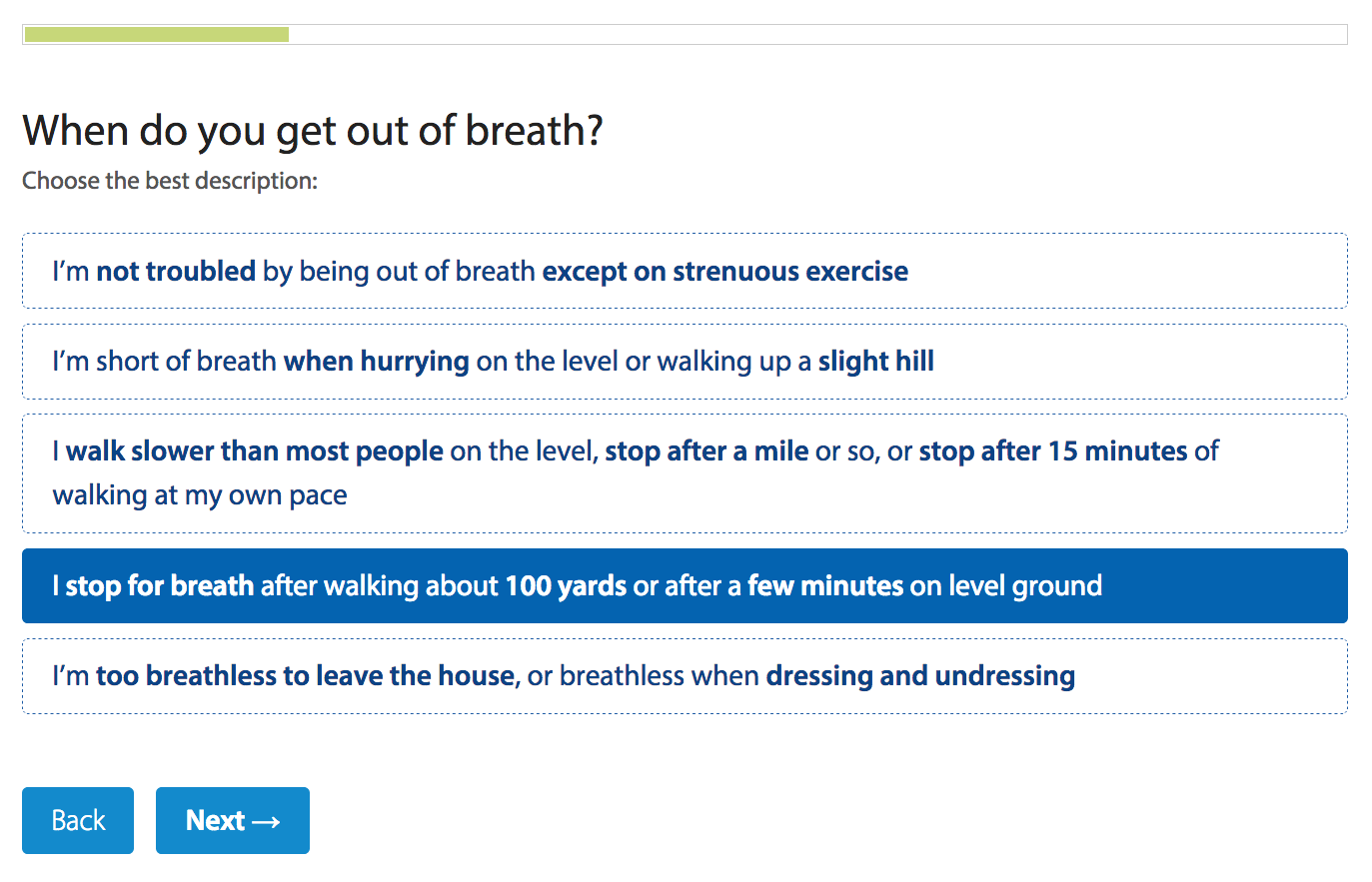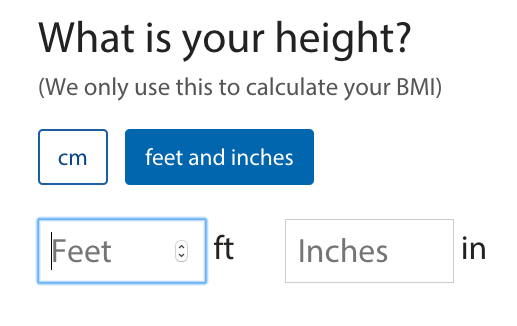You know you have a health condition, but do you need to see a doctor? You are being treated for a medical condition, but should you be getting additional investigations or treatment?
People with chronic health conditions, or conditions that flare from time to time, often feel unsure about seeing their doctor or don’t know what they are entitled to.
Information and support for people with lung conditions has always been at the heart of what the British Lung Foundation (BLF) does. With some of its recent web applications, BLF has been able to take its support to a new level by empowering users with personalised information.

Am I receiving the care I’m entitled to?
Chronic obstructive pulmonary disease, or COPD, describes a group of lung conditions that make it difficult to empty air out of the lungs because the airways have been narrowed.
BLF’s COPD passport application helps users to find out whether they are receiving the care they are entitled to, and what to do if not. Since its launch at the end of 2014 nearly 30,000 people have received personalised reports that they can use to inform appointments with doctors. COPD passport was the BMA Patient Information Awards Winner in 2015.
Should I see a doctor?
BLF’s Breath test application enables users who are feeling short of breath assess whether they need to see a doctor. Since its launch in June 2016 well over 300,000 people have received personalised reports to help them decide.

Design for user empowerment – success factors
So, what’s made these web applications so successful that users, healthcare professionals and the media have been recommending them?
Clear user benefit
No one will even start using your application if you don’t explain in a few words what a user will get from it. Explain it in as few words as possible.
BLF’s COPD passport explains in one sentence: “Complete your COPD passport to find out whether you’re receiving the care you’re entitled to, and what to do if not”.
Easy to use
Ease of use is paramount. User testing provides inputs to identify what’s not working and what is. It’s the designers job to come up with solutions.
Yes/No options are the simplest form of question and tend to generate the lowest level of user drop-off. However, sometimes multiple choices can’t be avoided.
For example, every step of the Breath test, with one exception, has a drop-off of well under 1%. The question in which users are asked to select from one of the five Medical Research Council breathlessness options has a drop-off of 4% to 5%. We can’t avoid showing these options because they are central to the Breath test assessment, but we’ve helped make it easy for users to scan the options by using some simple visual styling and bold text.

Mobile first
Thinking about the experience of mobile users isn’t just important, it’s critical. Non-desktop users of BLF’s applications account for around 70% of all users. As a designer, you need to be thinking about mobile user experiences right from the start.
No barrier to getting started
You don’t want to put up any barriers to getting started. Keep the introduction very short and right to the point. Avoid distractions.
We’ve found that users like to know how long it will take to complete the task, so that’s been included in the introduction to Breath test and COPD passport.
Finally, you just want one clear call to action. “Let’s get started” works for BLF’s applications.
Any application providing health condition guidance needs to be rooted in evidence-based medical research.
Based on research
Any application providing health condition guidance needs to be rooted in evidence-based medical research. The Breath test, for example, uses a standardised algorithm for calculating body mass index and the Medical Research Council’s rigorously validated breathlessness scale.
Tested
User testing is fundamental to designing digital services for people with health conditions. Testing can’t just take place at the end of the process. It needs to be integral to the entire development, with user testing influencing the design of user experiences.
Testing starts with the wording of questions to ensure there are no ambiguities. As applications are being prototyped and developed they need to be tested by users to ensure that instructions and interactive features are working as expected.
Know your audience
You need to know your audience and their preferences. A good example of how our knowledge of audience demographics influenced the design of Breath test is that, when asked for height and weight, the default is for imperial units. Users can switch to metric if they prefer.

Talk about confidentiality and security
Users of health-related applications are particularly concerned about confidentiality. Confirm that “it’s completely confidential” right up front.
When you invite users to give contact details, explain why. For example, “We’d love to keep you updated about what we’re doing, and how you can get involved. We’ll never share your details with anyone else, and you can unsubscribe at any time.”
Immediate results
Some users like to get results emailed. However, despite assurances about confidentiality, some will still prefer not to give an email address. That’s why, on BLF’s applications, we’ve enabled users to see their results without needing to enter any personal details.
Promote sharing – with sensitivity
You want users to tell others about your application, but you need to take care with messages.
BLF’s default message for someone who has a positive breath test is “British Lung Foundation’s online breath test says I’m in good shape. You can test your lungs at https://www.blf.org.uk/breathtest/“.
However, if the outcome is less positive the default message is “Test your lungs with British Lung Foundation’s online breath test at https://www.blf.org.uk/breathtest/“.
Design for user empowerment
It’s safe to say that effective self-help applications can have a transformative impact on the lives of people with health conditions. Intelligent, researched, user tested design is fundamental to delivering that impact.
